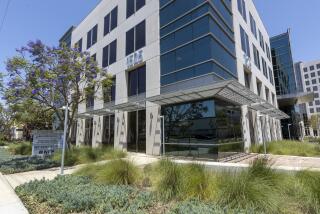Editorial: Californians deserve more transparency on bullet train finances
California lawmakers are supposed to scrutinize the state High Speed Rail Authority’s plans for building the bullet train, but at least one legislator believes he and his colleagues don’t have enough information to do the job. Assemblyman Jim Patterson (R-Fresno) has drafted a bill that would require the authority to report the full cost of the project and be clearer about the changes in the project’s scope and price tag. Patterson may be an opponent of the bullet train, but that shouldn’t dissuade elected officials — particularly Gov. Jerry Brown and legislative Democrats — from supporting common-sense transparency measures that can help them properly oversee the project.
Last week the authority finalized its 2016 Business Plan, a biennial progress report to the legislature. That plan reflects a big shift for the project. Running short on funding, the authority revealed that it would build the first segment from San Jose to farmland north of Bakersfield and postpone the more difficult route over the Tehachapi Mountains to Los Angeles. The authority will need to come up with an estimated $43.5 billion to construct the rail line from the Central Valley to Los Angeles and ultimately Anaheim. But the 2016 plan skimped on some key details, including how the state will cover the full cost of the project, and that has some lawmakers concerned.
Patterson’s Assembly Bill 2847 would write into law two recommendations from the non-partisan Legislative Analyst’s Office. The first would require that the authority include its projected borrowing costs in its business plan. The authority plans to borrow against future cap-and-trade revenue, and may fill at least part of the $43.5 billion funding gap by issuing securities backed by future train ticket sales. As the LAO analysis of the plan noted, however, debt financing and securitization come with significant costs — they could double the cost of borrowing, Patterson said — that aren’t being taken into account. That long-term expense should be spelled out so lawmakers understand the expense and risks of the various funding schemes.
The bill would also require the authority to identify the project segments that have changed from previous business plans. The LAO pointed out that because the project continually changes, it’s difficult for lawmakers to make an apples-to-apples comparison from one plan to the next. For example, since construction began in the San Joaquin Valley, the scope, cost and schedule have changed; the length of the segment decreased from 130 miles to 118 miles, while the cost went up. Authority officials may explain the changes in supporting documents and monthly reports buried on its website, but it’s difficult, if not impossible, for lawmakers and the public to track whether segments are on time and on budget.
Californians have invested billions of dollars in the bullet train, and their elected officials have a responsibility to provide thorough oversight and guidance to the project. Patterson’s bill is about giving legislators clearer information to make wise choices. Whether they are for the project or against it, they have no good reason to vote no on transparency.
Follow the Opinion section on Twitter @latimesopinion and Facebook
More to Read
A cure for the common opinion
Get thought-provoking perspectives with our weekly newsletter.
You may occasionally receive promotional content from the Los Angeles Times.










